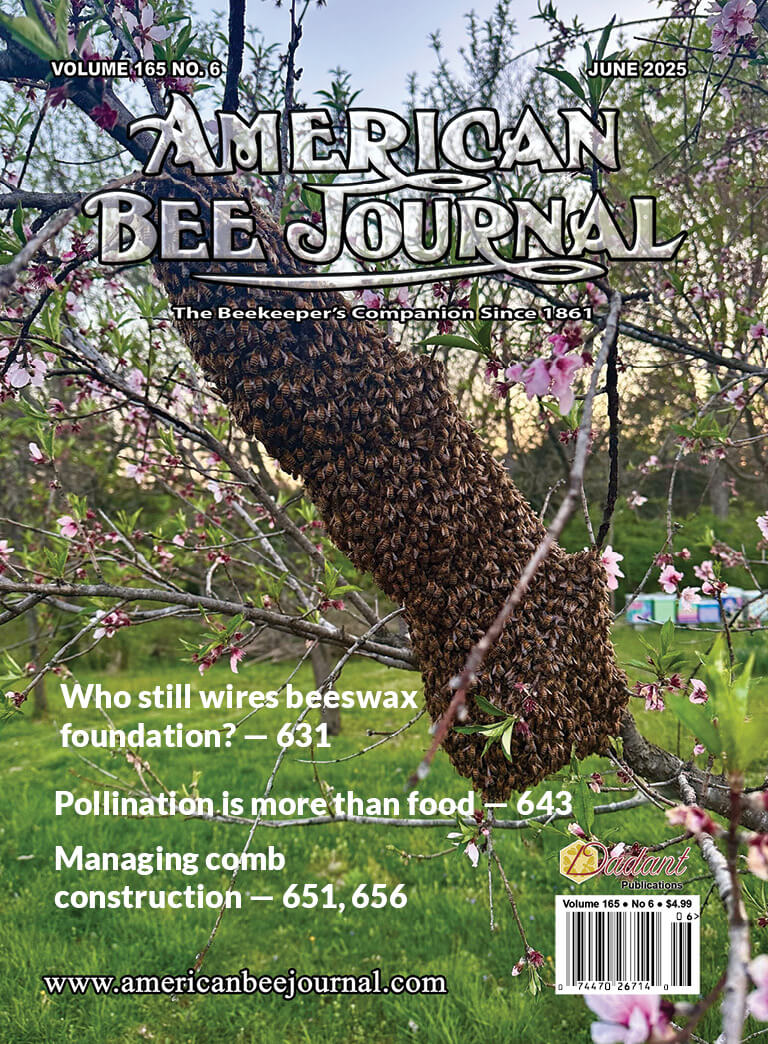Announcement Builds on Previous Investment in Michigan, Minnesota, North Dakota, South Dakota and Wisconsin
WASHINGTON, Oct.29, 2014 – Agriculture Secretary Tom Vilsack announced today that more than $4 million in technical and financial assistance will be provided to help farmers and ranchers in the Midwest improve the health of honey bees, which play an important role in crop production.
“The future of America’s food supply depends on honey bees, and this effort is one way USDA is helping improve the health of honey bee populations,” Vilsack said. “Significant progress has been made in understanding the factors that are associated with Colony Collapse Disorder and the overall health of honey bees, and this funding will allow us to work with farmers and ranchers to apply that knowledge over a broader area.”
An estimated $15 billion worth of crops is pollinated by honey bees, including more than 130 fruits and vegetables. USDA’s Natural Resources Conservation Service (NRCS) is focusing the effort on five Midwestern states: Michigan, Minnesota, North Dakota, South Dakota and Wisconsin. This announcement renews and expands a successful $3 million pilot investment that was announced earlier this year and continues to have high levels of interest. This effort also contributes to the June 2014 Presidential Memorandum – Creating a Federal Strategy to Promote the Health of Honey Bees and Other Pollinators, which directs USDA to expand the acreage and forage value in its conservation programs.
Funding will be provided to producers through the Environmental Quality Incentives Program (EQIP).
From June to September, the Midwest is home to more than 65 percent of the commercially managed honey bees in the country. It is a critical time when bees require abundant and diverse forage across broad landscapes to build up hive strength for the winter.
The assistance announced today will provide guidance and support to farmers and ranchers to implement conservation practices that will provide safe and diverse food sources for honey bees. For example, appropriate cover crops or rangeland and pasture management may provide a benefit to producers by reducing erosion, increasing the health of their soil, inhibiting invasive species, and providing quality forage and habitat for honey bees and other pollinators.
This year, several NRCS state offices are setting aside additional funds for similar efforts, including California – where more than half of all managed honey bees in the U.S. help pollinate almond groves and other agricultural lands – as well as Ohio and Florida.
The 2014 Farm Bill kept pollinators as a high priority, and these conservation efforts are one way USDA is working to help improve pollinator habitat.
USDA is actively pursuing solutions to the multiple problems affecting honey bee health. The Agricultural Research Service (ARS) maintains four laboratories across the country conducting research into all aspects of bee genetics, breeding, biology and physiology, with special focus on bee nutrition, control of pathogens and parasites, the effects of pesticide exposure and the interactions between each of these factors. The National Institute of Food and Agriculture (NIFA) supports bee research efforts in Land Grant Universities. The Animal and Plant Health Inspection Service (APHIS) conducts national honey bee pest and disease surveys and provides border inspections to prevent new invasive bee pests from entering the U.S. The Farm Service Agency (FSA) and NRCS work on improved forage and habitat for bees through programs such as the Conservation Reserve Program (CRP) and EQIP. The Forest Service is restoring, improving, and/or rehabilitating pollinator habitat on the national forests and grasslands and conducting research on pollinators. Additionally, the Economic Research Service (ERS) is currently examining the direct economic costs of the pollinator problem and the associated indirect economic impacts, and the National Agricultural Statistics Service (NASS) conducts limited surveys of honey production, number of colonies, price, and value of production which provide some data essential for research by the other agencies.
For more on technical and financial assistance available through conservation programs, visit www.nrcs.usda.gov/GetStarted or a local USDA service center.


